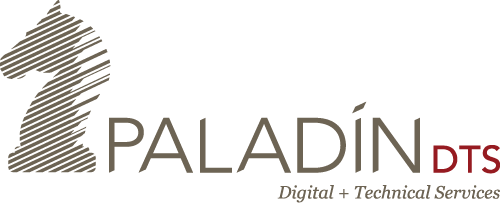By Kelsey Leslie, Paladin, Inc.
Building owners across the country are increasingly convinced that systems automation is a pathway to improved performance and reduced overhead, but they’re discovering that harnessing “Big Data” can be a big problem. While some large corporate operations with millions of square feet under roof are able to invest in customized solutions from leading automation providers, there is a sizable population of building owners with smaller budgets who are struggling to capitalize on the massive potential of the digital transformation. As a leading consultant on automation integrations, our team at Paladin has a few suggestions.
MAKE A COMMITMENT: Systems automation is tough to do halfheartedly – the investment in hardware, software and customization is fairly sizable, so you need to decide, “are we in or out.” If you’re out, you’ll need to ensure you have personnel who can take a hands-on approach to monitoring and managing your critical systems. If you’re in, you need to pick the right system.
MAKE A CHOICE: There are a vast array of automation choices available to building owners, each with its own strength or set of strengths that suit specific needs. Some are ideal for facilities with a single brand of equipment while others are better at cross-platform monitoring and management. Some require a more sizable investment up front while others spread their costs out over the life of a project. So either invest your time in weighing sales pitches from multiple providers or engage with a consultant.
MAKE A CALL: Given the diversity and complexity of systems, arrayed against the existing demands on your time and resources, you can accelerate the selection process with the help of an experienced consultant. In our offices, for example, we regularly assess the available platforms and grade them on their ease of use, impact on operating expenses and commitment to customer service. We help our clients make informed decisions in less time so they can reap the benefits sooner.
MAKE IT CLEAR: When you have chosen a system, don’t hesitate to tell the systems vendor EXACTLY what matters to you when it comes to daily operation and performance goals. Not only do you need to define success, you need a system that fits your life. Any system can open a firehose of information that only a data scientist could read, but you’re encouraged to find a system that synthesizes the information for you in a dashboard presentation so you can understand what’s happening and make decisions on how to improve system performance.
MAKE IT YOURS: Customization is a key strength of quality automation. If an owner is focused on reduced energy consumption, then the primary dashboard can feature electrical, natural gas, and water metering data in easy-to-read dials or charts. If comfort is the guiding goal, then the primary displays may be a chart with the rooms, room temperatures and room setpoints zoned to display deviations from desired standards.
MAKE IT WORK: Once your solution is installed, with sensors and controllers distributed across your critical systems, commit time to its use. There will be an initial learning curve that takes likely more time than you think you can spare, but understanding its operation will enable you to assess conditions on a regular basis and make decisions that will start the improvement process and the hopefully growing returns on your investment.
MAKE IT PAY: As the weeks, months and years go by, you’ll net the greatest benefit by paying attention to what the system tells you and making decisions to improve performance. Given the interconnected nature of systems and building users, you can anticipate an action sequence in which you tweak, monitor and tweak again until your system is running as desired and delivering improved performance.
No matter what automation platform our clients choose, we work hard to establish a clear definition of the owner’s objective(s) before we design a system architecture that flexibly facilitates their goals in the near and long term. A key tool in that process is our expertise in using metadata which consists of tagging captured data with standard naming conventions which allows monitoring and management based on location or system group or device or point type.
This approach has served our customers well, maximizing their flexibility as their organizations grow, their needs change or their vendors phase out. With proper metadata naming established from the start, owners have increased freedom, whether they want to add new equipment or migrate to an entirely different system in pursuit of better performance.
Like any other transformative technology that has come down the pike throughout history, the success or failure of said technology will depend on leaders who are able to maintain clear priorities, reasonable expectations and diligent execution on their goals. With the help our team, you can hit the mark and turn Big Data into a big opportunity for you and your organization.

